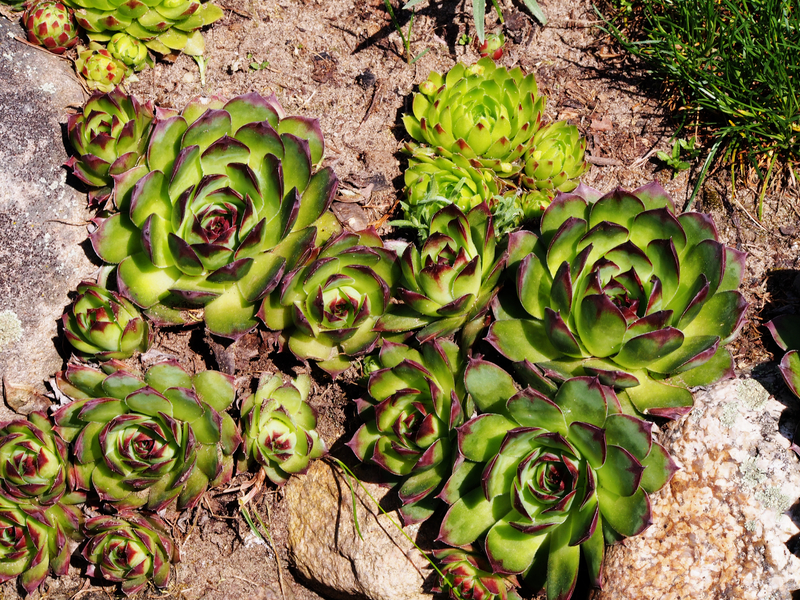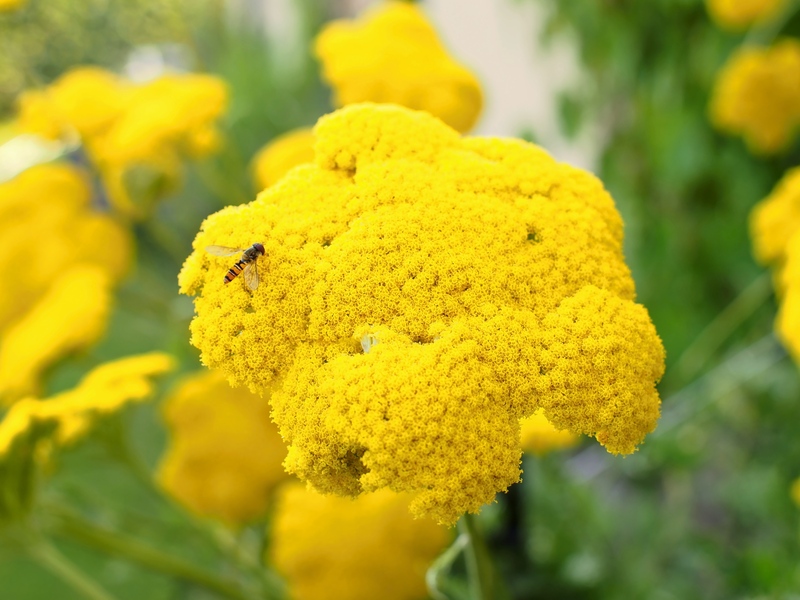Using Your Garden as a Tool for Climate Repair
Posted on 23/09/2025
Using Your Garden as a Tool for Climate Repair
Are you aware that your own backyard can play a crucial role in tackling global climate change? Harnessing gardens as tools for climate repair is not just a trend--it's a necessity. In this article, we explore practical strategies for climate-friendly gardening, the science behind regenerative gardening, and how you can maximize your garden's positive environmental impact. Whether you have a sprawling yard or a few pots on your balcony, every green space counts! Dive into this comprehensive guide and discover how gardening for climate repair empowers you to be part of the solution.

Understanding the Connection: Gardens and Climate Change
Traditional gardening has long been celebrated for its beauty and recreational benefits. However, using your garden as a tool for climate repair takes this a step further. Gardens are not just decorative; they can help sequester carbon, support biodiversity, restore soil health, and even mitigate urban heat. Here's how:
- Carbon Sequestration: Plants take in carbon dioxide (CO2) during photosynthesis, storing carbon in their roots, stems, and leaves, as well as in the soil.
- Supporting Wildlife: Native plants and pollinator-friendly gardens rebuild habitats for birds, insects, and other creatures hard hit by habitat loss.
- Water Management: Healthy gardens absorb rainwater, help recharge groundwater, and reduce urban runoff and pollution.
- Cooling Effect: Strategic planting can lower local temperatures and provide natural shade, helping to combat urban heat islands.
What is Climate Repair?
Climate repair involves actions that not only reduce further harm but actively attempt to restore Earth's climate systems. While large-scale measures are vital, climate repairing gardens form a key part of a grassroots, collective effort.
Designing a Climate-Friendly Garden
Ready to use your garden for climate action? It all begins with a conscious design. Below are actionable steps and best practices to transform your garden into a powerhouse for climate repair:
1. Choose Native and Climate-Resilient Plants
Native plants are adapted to local conditions, require less maintenance, and provide valuable resources for local fauna. Consider these guidelines:
- Research your local ecosystem to identify indigenous species.
- Avoid invasives, as these can displace native species and reduce biodiversity.
- Select drought-tolerant or climate-resilient varieties to prepare your garden for changing weather patterns.
2. Prioritize Soil Health
Healthy soils store more carbon than unhealthy ones and support resilient plant communities. Here's how to improve your soil for climate repair gardening:
- Add compost: Homemade or locally sourced compost builds soil organic matter and reduces landfill waste.
- Mulch generously to retain moisture and suppress weeds, reducing water usage and soil erosion.
- Limit tilling and disturbance to protect soil microbial life and maintain soil carbon stores.
3. Minimize Chemical Inputs
Pesticides and synthetic fertilizers often damage beneficial microorganisms, give off greenhouse gases, and contaminate waterways. Opt for organic and natural solutions such as:
- Natural pest controls like neem oil, beneficial insects, and companion planting.
- Organic fertilizers such as compost tea, worm castings, and bone meal.
- Integrated pest management (IPM) for a balanced, ecological approach to plant health.
4. Embrace Perennials and Trees
Perennials and trees play a larger role in carbon capture due to their longevity and substantial biomass. For an effective climate repair garden, consider planting:
- Deciduous and evergreen trees adapted to your local climate.
- Fruit and nut trees to provide food for both you and local wildlife.
- Woody shrubs and deep-rooted perennials for soil stabilization and long-term sequestration.
5. Encourage Biodiversity
A varied ecosystem supports healthy gardens and enhances their climate repair abilities. Build biodiversity by:
- Mixing plant heights and types for layered habitats.
- Adding wildflower meadows or pollinator strips to attract bees and butterflies.
- Leaving areas undisturbed for ground-nesting insects and wildlife refuges.
6. Water Wisely
Droughts and extreme weather are increasingly common. Climate repair gardening makes sustainable water management a priority:
- Install rain barrels or cisterns to capture and reuse rainwater for irrigation.
- Group plants with similar water needs to maximize efficiency.
- Use drip irrigation or soaker hoses to minimize evaporation and target roots directly.
Practical Steps for Everyday Climate Repair in Your Garden
It's never too early or late to start acting. Here are actionable, day-to-day tips for using your garden for climate repair:
- Compost food scraps and yard waste: Diverting organic material from landfills reduces methane--a potent greenhouse gas--and creates valuable soil amendments.
- Reduce lawn areas: Lawns are low in biodiversity and require resources. Replace sections with native plantings or edible gardens.
- Leave some leaf litter: Instead of clearing every fallen leaf, let them decompose naturally to feed the soil and shelter beneficial insects.
- Grow your own food: Homegrown vegetables have a much lower carbon footprint than store-bought.
- Practice "no-dig" gardening: This method preserves soil structure, fosters microbial life, and reduces CO2 emissions from soil disturbance.
- Choose eco-friendly materials: Use reclaimed wood, stone, or other sustainable materials for garden beds and structures.
Benefits of Using Your Garden as a Climate Repair Tool
Your garden is more than just a space for relaxation or beauty. Here's how gardening for climate repair creates wide-reaching benefits:
- Reduces Carbon Footprint: Through plant growth, composting, and energy-efficient gardening practices.
- Promotes Biodiversity: Offering food and shelter to pollinators, birds, and beneficial insects.
- Improves Air and Water Quality: Plants filter pollutants, and healthy soils absorb and purify rainwater.
- Boosts Community Resilience: Neighborhood gardens create green corridors, buffer extreme heat, and support food security.
- Enhances Personal Well-being: Gardening alleviates stress, increases physical activity, and provides a deeper connection to nature.
Overcoming Barriers: Challenges and Solutions in Climate Repair Gardening
While the benefits are substantial, gardening for the climate is not without its hurdles. Common concerns include limited space, lack of knowledge, or local restrictions. Here are ways to overcome these:
Small Space Solutions
- Container Gardens: Grow native perennials, pollinator plants, or small fruiting shrubs on patios and balconies.
- Vertical Gardening: Use walls or trellises for climbing plants, increasing green cover with minimal footprint.
- Community Gardens: Join or initiate a neighborhood plot to expand your impact beyond your own space.
Education and Community Support
- Attend workshops or online seminars: Local horticultural societies or environmental groups are rich sources of information.
- Connect with local experts: Native plant societies and extension services offer region-specific advice.
- Share resources and seeds: Building a community seed exchange can promote native species and genetic diversity.
Policy and Advocacy
- Petition for eco-friendly bylaws: Advocate for composting, rainwater collection, or front-yard food gardens in your city.
- Support incentives for sustainable landscaping: Many municipalities offer rebates for removing lawn or installing rain gardens.
Case Studies: Real-World Success Stories
Let's look at inspiring examples where individuals and communities have used their gardens for tangible climate repair:
The Edible Forest Garden
A suburban family replaced their traditional lawn with an edible forest garden, layering fruit trees, berry shrubs, perennial vegetables, and dynamic groundcovers. Over five years, they observed:
- Improved soil health and organic matter
- Lower summer temperatures in their yard
- Increased appearances of pollinators and native songbirds
- Reduction in grocery store trips and plastic packaging waste
The Rain Garden Revolution
In an urban neighborhood prone to flooding, a collective effort among residents transformed parking strips into rain gardens filled with native plants. Outcomes included:
- Decreased instances of street flooding
- Cleaner runoff entering local waterways
- Creation of a green corridor supporting urban biodiversity
The Pollinator Pathway
A rural school collaborated with families to establish native wildflower strips linking fragmented meadows. Results were:
- Rise in native bee and butterfly populations
- Opportunities for student-led environmental education projects
- Increased community pride and involvement

Future-Proofing Cities: The Urban Garden as a Climate Repair Catalyst
Cities are on the frontlines of climate change, facing heat waves, flooding, and air pollution. An urban climate repair garden can:
- Curb local air pollution by trapping particulate matter on leaves and bark.
- Reduce "heat island" effects with abundant shade and evaporative cooling.
- Create microhabitats for insects and birds in areas otherwise devoid of nature.
- Foster food sovereignty by supporting community and rooftop food gardens.
By making gardening for the environment accessible in cities through incentives, community projects, and public education, urban spaces can become resilient, restorative, and thriving.
Conclusion: Cultivating Hope with Climate Repair Gardening
Using your garden as a tool for climate repair demonstrates that individual and collective action matters. Every compost heap, native plant, and pollinator patch helps draw down carbon, support biodiversity, and build community resilience.
Whether you nurture a large backyard, a school plot, or a window box, gardening for climate repair means you're contributing to a healthier planet. As more people adopt these approaches, gardens worldwide will become living laboratories for climate solutions--a testament to the power of nature and human stewardship working hand in hand.
Start today, and let your garden be a seed of change for a brighter, climate-friendly future!

